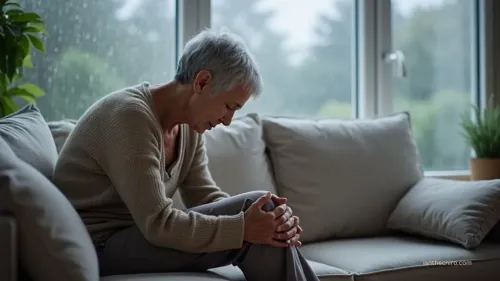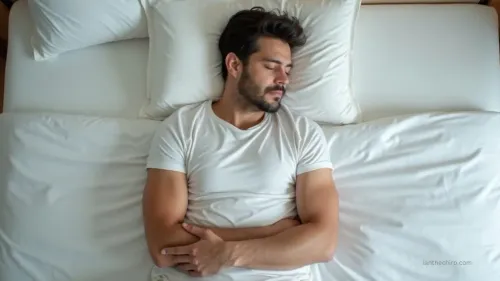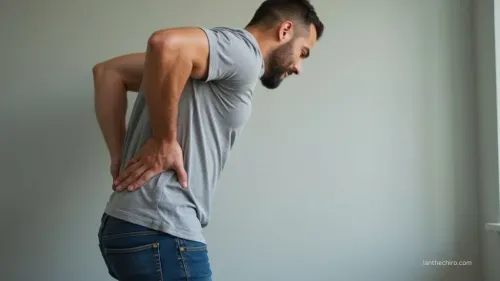Comprehensive Guide to Understanding and Managing Scoliosis
In our journey to comprehend and manage scoliosis, we delve into the many facets of this spinal condition. Originating from the Greek word skolios, meaning "bent" or "twisted," scoliosis pertains to an abnormal, side-to-side curvature of the spine, often resembling an "S" or "C." Recognizing scoliosis is crucial, as it can result in symptoms like uneven shoulders, back discomfort, and others that can influence daily activities.
Distinguishing Scoliosis Curvature Types
Scoliosis curvature comes in 4 main forms, including:
1. Thoracic Scoliosis
This form impacts the mid to upper sections of the spine, causing curvature in the thoracic area.
2. Lumbar Scoliosis
Occurring in the lower portion of the spine, lumbar scoliosis may cause lower back discomfort.
3. Thoracolumbar Scoliosis
This form affects both the thoracic and lumbar sections of the spine, leading to complications like an uneven waistline.
4. Double Major Scoliosis
In this type of scoliosis, two distinct curves are present in the spine. One curve typically occurs in the thoracic region and the other in the lumbar region. As a result, the spine forms an "S" shape. Double major scoliosis may present complications in both upper and lower sections of the spine, potentially leading to discomfort or variations in the upper back and lower waistline.
What Triggers Scoliosis?

There are many different health conditions that can cause scoliosis. Some of the most common causes of scoliosis include:
- Idiopathic scoliosis: The most prevalent form, idiopathic scoliosis makes up around 80% of all cases. Frequently seen during adolescence, its cause remains unknown.
- Congenital scoliosis: This form is instigated by abnormal spinal growth before birth.
- Neuromuscular scoliosis: This form is incited by neuromuscular conditions, such as cerebral palsy or muscular dystrophy.
- Degenerative scoliosis: This form results from degenerative changes in the spine, like arthritis or osteoporosis.
Additionally, spinal injuries, tumours, and other health issues can lead to scoliosis. It is crucial to consult with your healthcare provider if you're displaying any symptoms of scoliosis.
Severity of the Curve
Scoliosis can be categorised into 3 based on the severity of the curvature:
1. Mild Scoliosis
Mild scoliosis is characterised by a spinal curvature of less than 20 degrees. In most cases, it doesn't require treatment and is usually monitored for progression.
2. Moderate Scoliosis
Moderate scoliosis has a curvature between 25 and 40 degrees. Treatment may include scoliosis exercises and scoliosis brace usage to slow or halt the progression of the curve.
3. Severe Scoliosis
Severe scoliosis is defined by a curvature greater than 45 degrees. In these cases, scoliosis surgery may be necessary to correct the deformity and prevent further complications.
Scoliosis Symptoms
The symptoms of scoliosis can vary depending on the severity of the curvature of the spine. Some common symptoms of scoliosis include:
- Pain in the back, neck, and shoulders
- Uneven hips or shoulders
- Noticeable curvature of the spine
- Breathing difficulties
- Digestive issues
In some cases, scoliosis may not cause any symptoms at all, which is why it is important to have regular check-ups with your healthcare provider to monitor the health of your spine.
Scoliosis Diagnosis
Diagnosing scoliosis typically involves a physical examination and imaging studies, such as:
Scoliosis X-ray

A full spine scoliosis X-ray can help determine the severity and location of the spinal curvature. This imaging study provides essential information for deciding the best course of treatment.
Physical Examination

During a physical examination, your healthcare provider will evaluate the spine's appearance, check for any asymmetry, and measure the patient's range of motion. These assessments help determine the presence and severity of scoliosis.
Scoliosis Treatment
The treatment for scoliosis depends on the severity of the curvature of the spine, the patient’s age, and the underlying cause of the condition. In mild cases of scoliosis, no treatment may be required, and the condition may simply be monitored by your healthcare provider.
For more severe cases of scoliosis, treatment options may include:
1. Scoliosis Exercises

Prescribed by a chiropractor or physical therapist, these exercises strengthen supporting spine muscles, improve posture, and relieve pain.
2. Scoliosis Brace
A scoliosis brace is often recommended for individuals with moderate scoliosis to prevent further progression of the curve. Bracing is typically most effective in patients who are still growing. One example of a scoliosis brace can be seen in this video below:
3. Scoliosis Surgery

For severe cases or when conservative treatments fail to halt the curve's progression, surgery is considered. The goal is to correct the spinal deformity and provide long-term stability.
The Role of Chiropractic Care in Scoliosis Management
Chiropractic care, such as that provided by Ian The Chiro, can play a vital role in managing scoliosis. A chiropractor can help alleviate pain, improve posture, and provide guidance on exercises and stretches to support spinal health. Chiropractic adjustments may also help reduce the severity of the curvature in some cases.
How Alarming is Scoliosis? Should I be Concerned?
In most cases, scoliosis doesn't significantly impact daily life, especially if it's detected early and managed appropriately. However, more severe cases may require active treatment strategies. Remember, the key to managing scoliosis is early detection and treatment, coupled with routine check-ups.
Conclusion
Scoliosis is a complex condition that affects the curvature of the spine. Understanding its causes, symptoms, and treatment options is essential for managing the condition effectively. If you suspect you or a loved one may have scoliosis, it's crucial to consult a healthcare professional for a proper diagnosis and personalised treatment plan.
For expert chiropractic care and guidance on managing scoliosis, consider reaching out to Ian The Chiro. With their extensive knowledge and experience, we can help improve your spinal health and overall well-being. To learn more or schedule an appointment, visit our FAQ page.
Reference
BracedLife. (2023, May 18). Ada Milwaukee Brace Fitting. YouTube. Retrieved from https://www.youtube.com/watch?v=J5GD3CMe4Gc
For more info:
Scoliosis Research Society
Website: https://www.scoliosis.org/
National Institute of Arthritis and Musculoskeletal and Skin Diseases
Website: https://www.niams.nih.gov/health-topics/scoliosis













